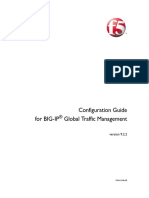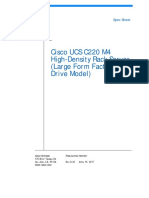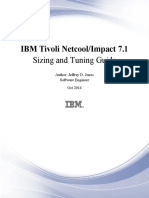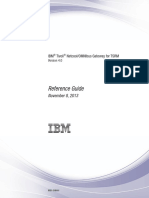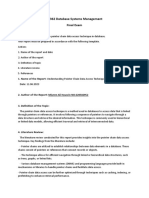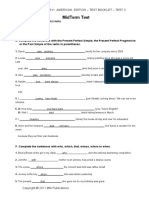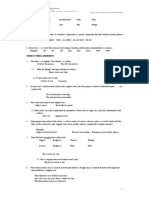Documentation Search in Tivoli Netcool/OMNIbus 8.1.
Netcool/OMNIbus Netcool/OMNIbus / Feedback Product list
Change version Sizing your deployment
8.1
Last Updated: 2022-03-22
Design the system architecture of your Tivoli® Netcool®/OMNIbus deployment to meet your network requirements. Ensure that
Show full table of contents
all the hosts that are used in your deployment can support the components that you install.
Filter on titles Typically, an ObjectServer uses one or two CPU cores, although this is dependent on your environment. Additional CPU cores
are useful for ObjectServers that have lots of concurrent connections, for example at the aggregation layer or display layer, or
IBM Tivoli Netcool/OMNIbus V8.1 in flood conditions or failover conditions. Because it supports multiple concurrent read and write operations, ObjectServers
Documentation can scale across multiple CPU cores. You can run Tivoli Netcool/OMNIbus on multi-cored server architectures and you can
scale the application by adding processor cores to existing servers. The capacity of an ObjectServer depends greatly on the
Product overview
workload that you want to subject it to.
Scenarios
Multiple client requests can be sent to the ObjectServer, which means that large numbers of users can be supported, both in a
Planning for installation or
single-tier architecture, and in a multitier architecture.
upgrade
Installing and updating Tivoli The Web GUI can obtain events from multiple data sources and display them in a single Active Event List (AEL). This capability
Netcool/OMNIbus gives you an aggregate view of events from multiple ObjectServers, without the need for several open AELs.
– CPUs: Ensure that ObjectServer run on hosts that have the highest-speed CPUs possible, to maximize the performance of
the system. Use the following values as guidelines:
▪ Ensure Intel based processors are 2.4 GHz or higher.
▪ Ensure RISC processors are 1.5 GHz or higher.
– Memory: Allocate memory generously.
As a 32-bit application, Tivoli Netcool/OMNIbus can support up to 4 GB or RAM. As a 64-bit application, Tivoli
Netcool/OMNIbus can support up to the maximum memory that is supported by your hardware. Typically an ObjectServer
consumes no more than 1 GB of RAM, but observe an upper limit of 4 GB to allow for event storms, heavy loads from clients,
or failover conditions.
– Network capacity: Ensure that the Tivoli Netcool/OMNIbus components are in a data center that has good network
reliability.
Typically, network connection speeds of 100 Megabits per second, or higher, are suf cient.
– Disk space: Ensure that greater than 20 GB disk space is allocated on your host for a Tivoli Netcool/OMNIbus installation, in
addition to the space allocated to the installation footprint.
This additional space allows for log les and ObjectServer storage checkpoints.
The following table contains guidelines for sizing your deployment.
Important: These sizings are for illustrative purposes only. You must test your environment to ensure that it can
support the Tivoli Netcool/OMNIbus components.
Table 1. Sample sizing guidelines
Component Sizing guideline Explanation
These ObjectServers operate in
isolation or as part of a failover pair.
Cores: 2 This sizing guideline is not suitable
Standalone ObjectServers
RAM: 4 GB for an ObjectServer that supports
large numbers of probes or client
connections.
These ObjectServers are part of the
Aggregation ObjectServers or display Cores: 4
3-tier architecture that you should
ObjectServers RAM: 4 GB
use for large deployments.
Gateways that connect a pair of
ObjectServers are subject to the
requirements for memory and CPU as
Gateways that connect a pair of Cores: 1
ObjectServers. However, these
ObjectServers RAM: 2 GB
gateways are not subject to the same
number of connections as
ObjectServers.
Gateways that connect an
ObjectServer to a third-party
Gateways that connect an database need more memory and
Cores: 2
ObjectServer to a third-party CPU than gateways that connect a
RAM: 4 GB
database pair of ObjectServers, to support the
connection mechanisms to the
database.
These probes can typically accept
Probes that listen on the network, for and process incoming events on
Cores: 2
example the Probe for SNMP or the separate threads. This sizing
RAM: 2 GB
Socket Reader Probe guideline allows for event storm
conditions.
These probes are use CPU less
Probes that connect to a target or
Cores: 1 intensively than probes that listen on
read from a log le, for example the
RAM: 2 GB the network, but have the same
SYSLOG Probe or the CORBA Probe
requirements for memory.
For up to 50 users and up to 2 data
sources:
Cores: 2
Web GUI server RAM: 4 GB N/A
For up to 90 users 3-4 data sources:
Cores: 4
RAM: 4 GB
Disk Space:
Web GUI client Minimum 1.5 GB N/A
RAM: Minimum 1 GB
– Sizing examples
As you design the architecture of your Tivoli Netcool/OMNIbus deployment, your sizing requirements can change. Use these
examples, which show different types of Tivoli Netcool/OMNIbus system, to guide you. These examples take into account the
shared allocation of resources for components that are on the same host.
– Disk space requirements
Ensure that there is enough disk space available on the volume for the operating system on which you are installing Tivoli
Netcool/OMNIbus.
Parent topic:
Planning for installation or upgrade
Was this topic helpful? Yes No
© Copyright IBM Corporation
2021, 2022
Cookie Preferences
Contact IBM Privacy Terms of use Accessibility English










